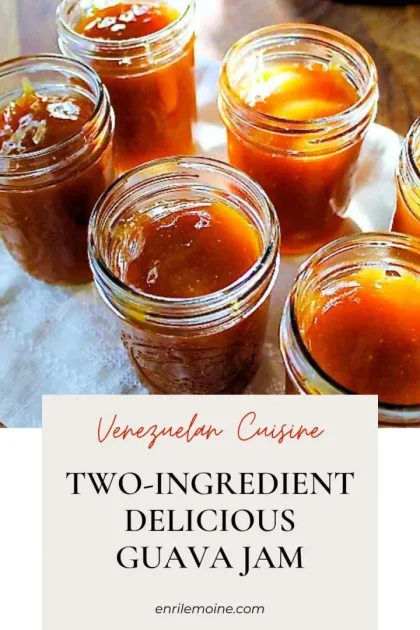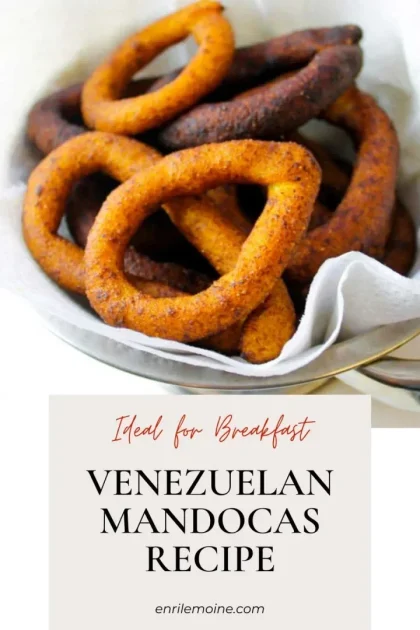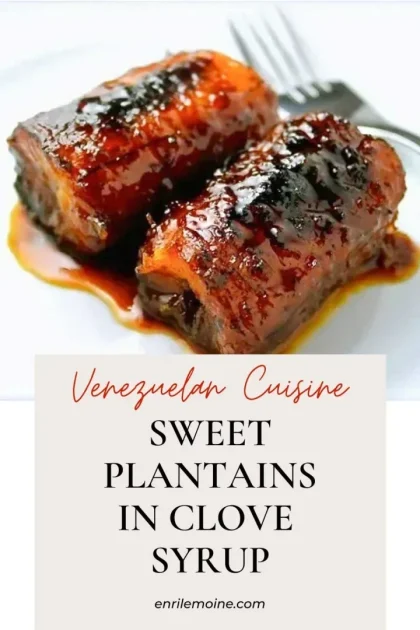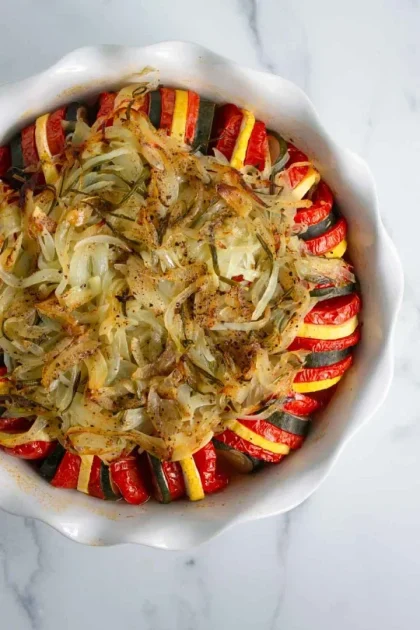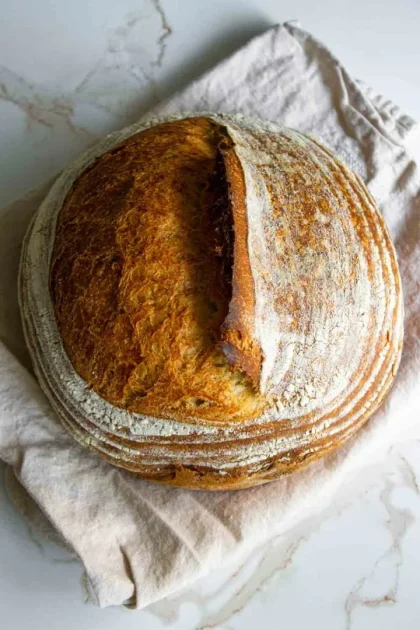This is the traditional Venezuelan arepas recipe. Or the recipe for the authentic arepas venezolanas. And I would say these are also the everyday Colombian arepas (keep reading, and I will tell you why.) These are the arepas we eat for breakfast and dinner. And I bet you will love them as much as we do if you try them!
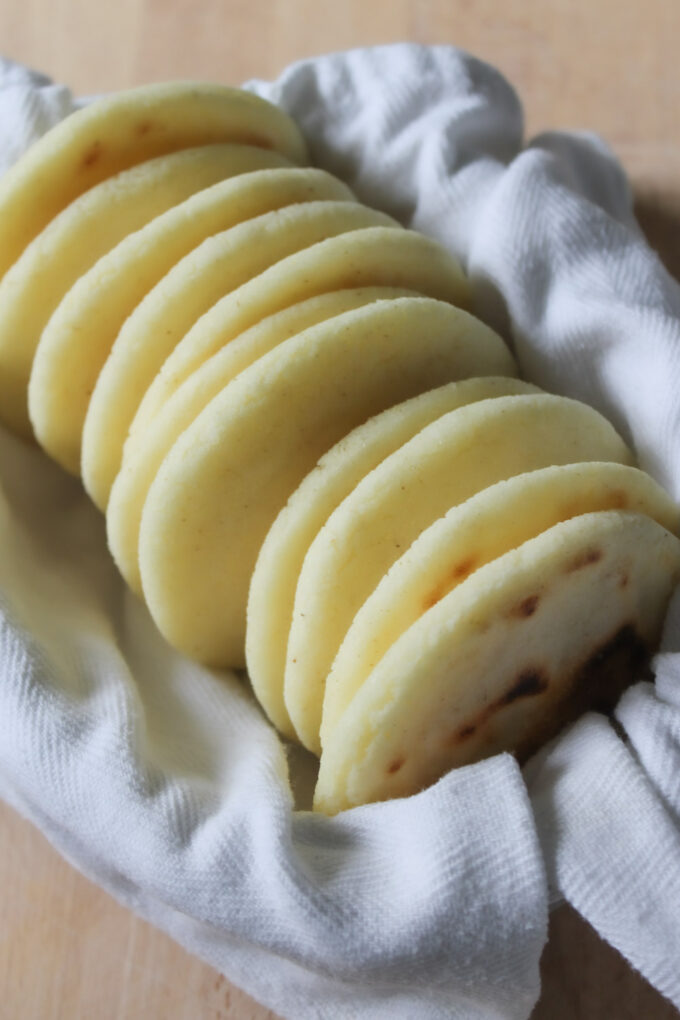
Note: As a member of the Amazon Affiliate Program and other affiliate programs, I receive compensation for products sold through the affiliate links in this post at no cost to the buyer.
These are the same arepas that are perfect for school and office lunches. The same that we used to eat in the areperas (arepa restaurants) across Venezuela, my home country. No wonder, along with our pabellón criollo, they are considered the national dish of Venezuela!
Luckily for us now you can find them in arepa places and food trucks along the US, where they are sold as gourmet street food, stuffed with a wide variety of fillings, including black beans and queso blanco, chicken avocado salad, carne mechada, and so on.
- What is an arepa?
- What are the origins of the arepa?
- What are arepas made of?
- What is the best arepa flour?
- Where to buy arepa flour?
- How do you cook arepas?
- Can arepas be frozen?
- How to reheat arepas
- How do you eat arepas?
- With or without an arepa maker?
- How to make arepas from scratch?
- More arepa recipes
- Traditional Venezuelan arepas recipe
- Authentic Venezuelan Arepas Recipe
What is an arepa?
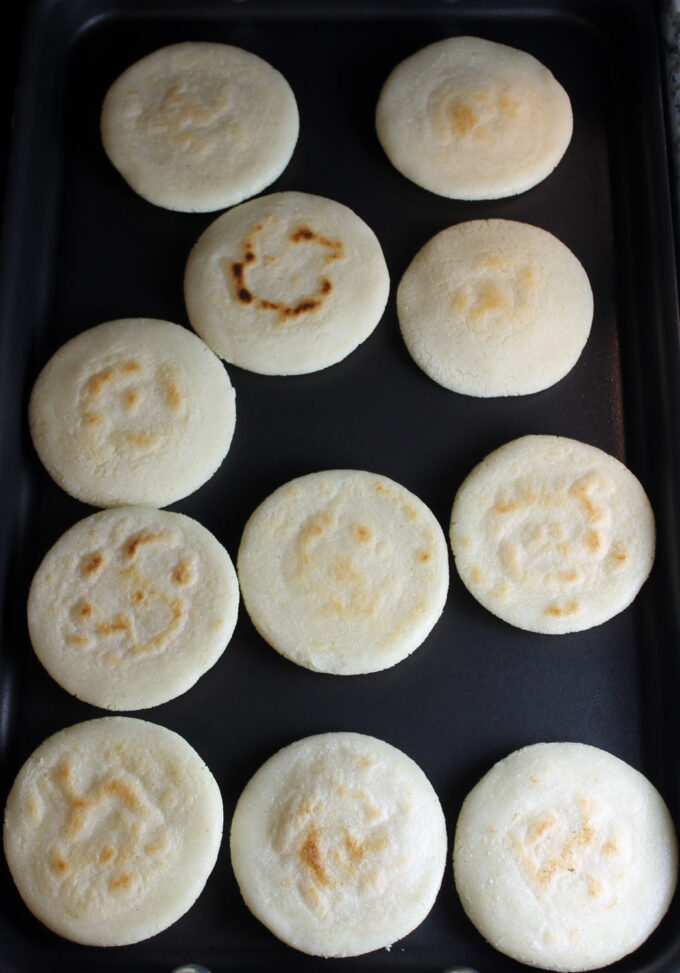
An arepa is a round, flat cake or corn patty we eat instead of bread. Its flavor is pretty neutral, hence the arepa versatility regarding the many fillings you can put inside it.
Arepas are for Venezuelans and Colombians, similar to tacos are for Mexicans, sandwich bread is for Americans, and baguettes are for Frenchs. They are our daily bread. Period.
What are the origins of the arepa?

Arepas have pre-Columbian origins. Indigenous people from what is now Venezuela, Colombia, and Panamá benefited from abundant corn harvests, which they considered a gift from the gods.
They soaked and ground the corn kernels and added water to make a dough. That dough was cooked in round, flat patties. That’s how the arepa was born. It’s generally accepted that the name arepa derives from the voice erepa.
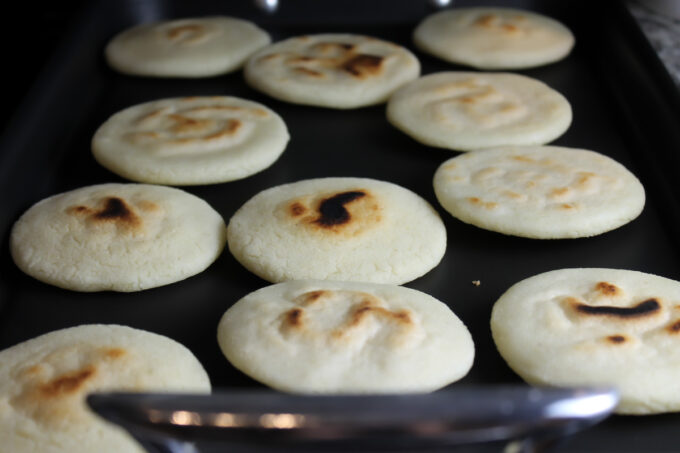
Erepa was the name Cumanagoto people gave to corn. Cumanagotos were native Americans from northeastern Venezuela who spoke the Cariban language.
What are arepas made of?
Arepas are made with only three ingredients: arepa flour (we have pre-cooked corn flour specially created to make arepas), water, and a pinch of salt. And because of that: arepas are gluten-free too! Bingo!
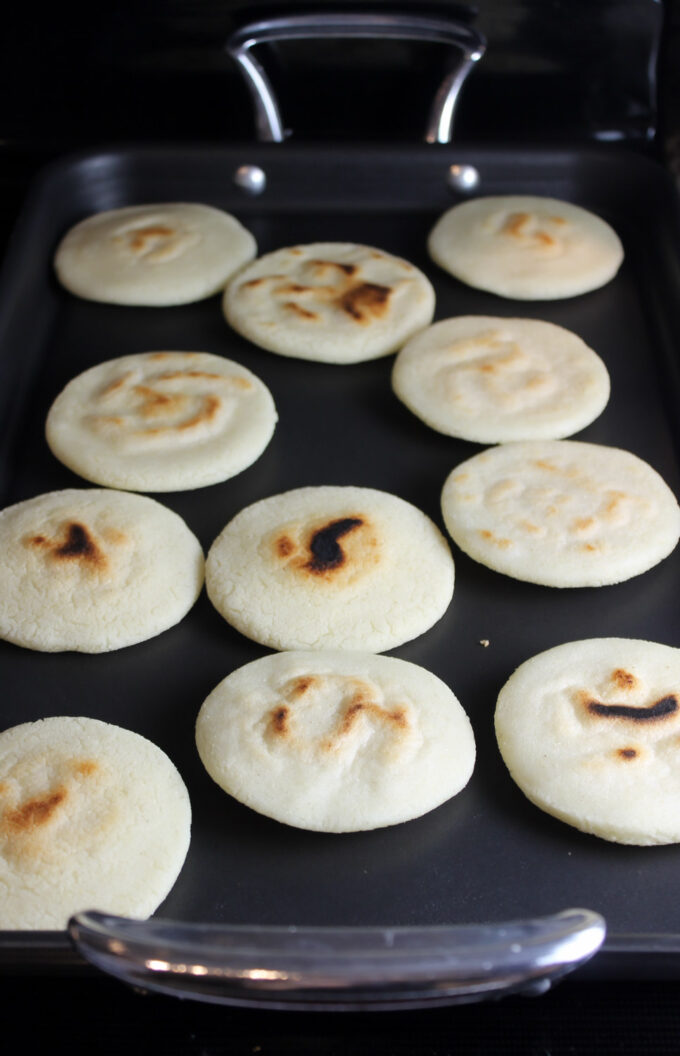
Before Harina P.A.N. was launched in Venezuela in 1960, making arepas was tough and harsh. Women were in charge of this laborious process.
Corn kernels had to be soaked in water. Then, kernels were manually processed in huge wooden mortars called pilón, to take the peel away. After this process, corn was finely ground to make a dough with water and salt.
In the mid-’50s, Venezuelan engineer Luis Caballero-Mejías created the pre-cooked corn flour as we know it today. He patented his creation as Harina de Masa de Maíz (corn flour dough) or Masa de Maíz Deshidratada (dehydrated corn dough.)
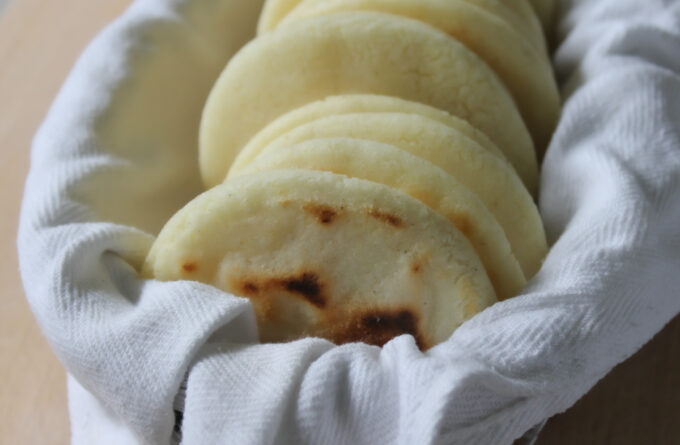
In Venezuela, the actual women’s liberation came later, in 1960. After buying Caballero-Mejías’ patent, Lorenzo Mendoza Fleury launched Harina P.A.N. The acronym P.A.N. stands for Producto Alimentario Nacional (National Alimentary Product.)
That name was premonitory because Harina P.A.N. became an immediate success and a staple in every Venezuelan household.
What is the best arepa flour?
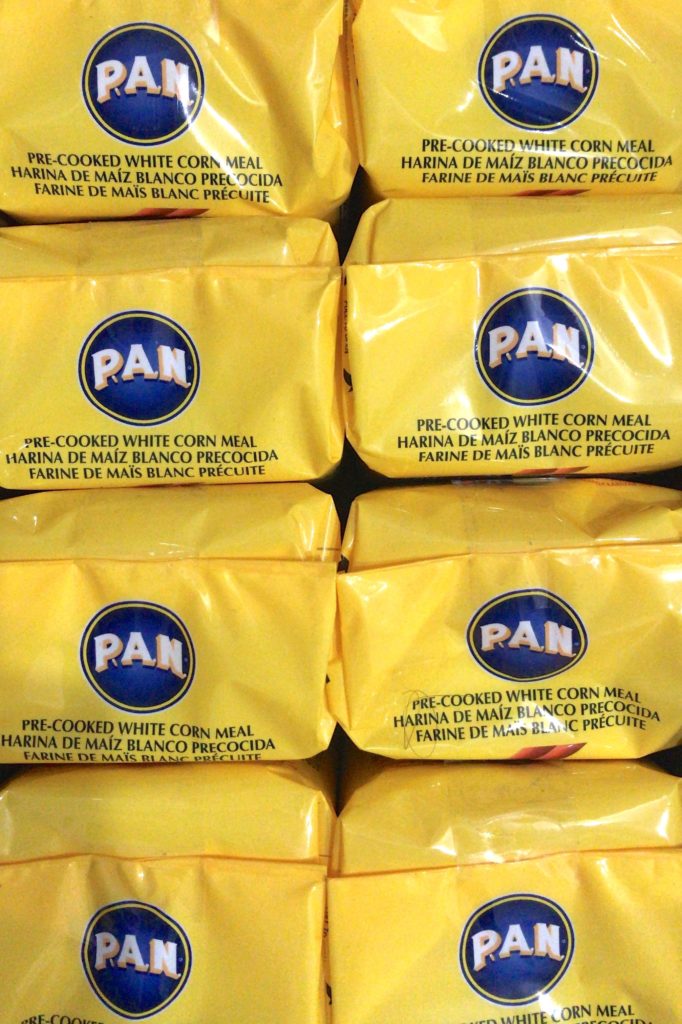
My favorite arepa flour is Harina P.A.N. Not only is this brand part of Venezuela’s DNA, and it is part of our identity. Harina P.A.N. is also Venezuela’s most popular brand. We call it “harina pan.” And because of the vast Venezuelan diaspora, arepas and Harina P.A.N. are becoming increasingly popular everywhere!
This pre-cooked flour makes arepa dough in less than 10 minutes. We use this arepa flour not only to make arepas. We also make hallacas, bollitos, hallaquitas, empanadas, mandocas and so on.

You have to be careful, though. This arepa flour should not be confused with the cornmeal used to make cornbread in America.
Neither with the Mexican masarina used to make corn tortillas and tamales, nor any other masa harina or pre-cooked cornmeal. Arepa flour is made with white corn, while tortillas and tamales are made with corn that has passed through a nixtamalization process.
Where to buy arepa flour?
Harina P.A.N. is sold in Latino stores across the U.S. and major grocery stores where it can be found at the international food isles. More recently (January 2020), and to my happiness, I saw it at Costco in Miami! You can also buy it online.
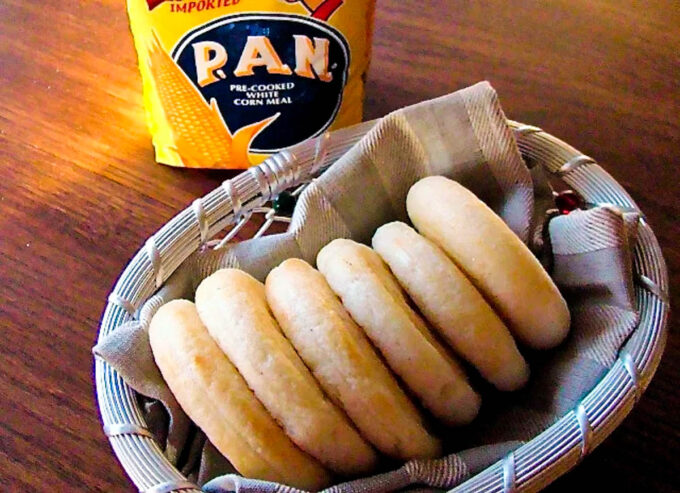
As a result of the increasing Venezuelan diaspora, Harina P.A.N. is also sold in Central and South American countries, as well as in most of Europe.
Harina P.A.N. also sells yellow corn arepa flour, and I love it. They sell sweet corn cachapa flour too. And more recently (2019,) they launched their whole-grain pre-cooked arepa flour.
How do you cook arepas?
In Venezuela, we cook arepas on a pan or griddle called budare. We first cook them in the budare and we may finish them in the oven. I use a non-stick griddle, and that’s it.
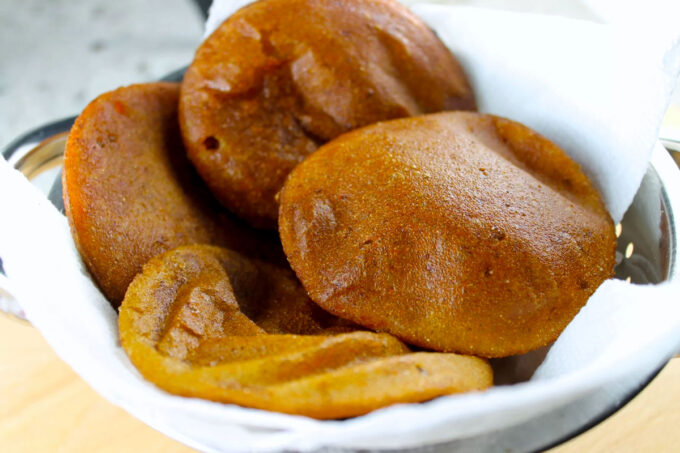
Arepas can also be fried. More recently, it’s common to cook them in convenient arepa makers.
Besides plain arepas, there are other varieties of arepas, like the sweet ones that we also fry. Lately, there has been a boom in flavored and colored arepas. A good example of this type of arepa is the ones I make by adding carrots, spinach, and beets to the dough for a colorful presentation.
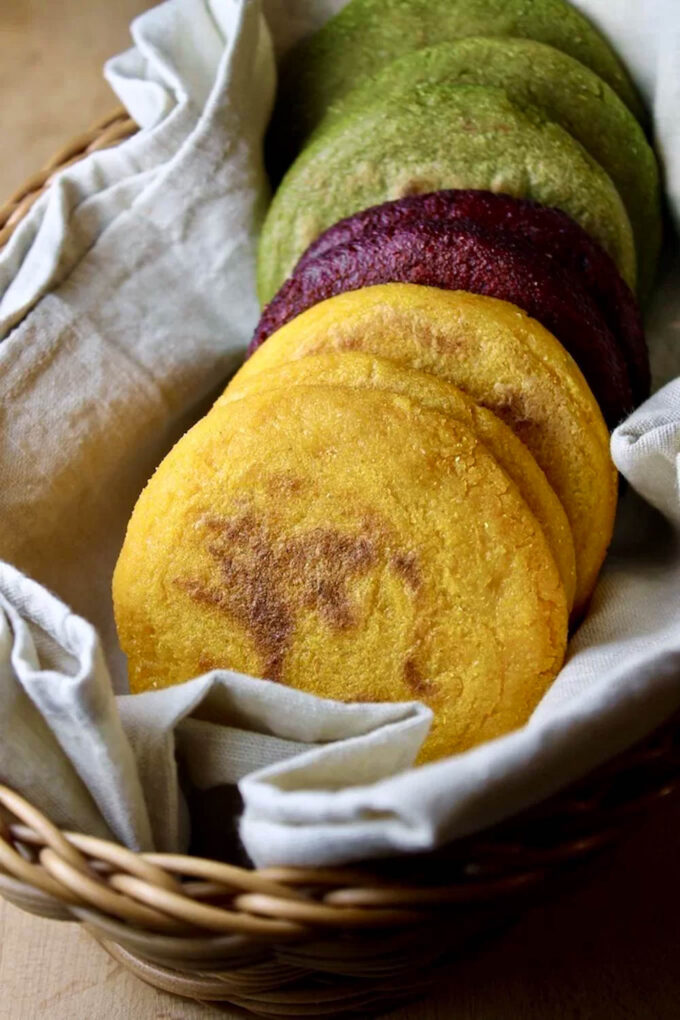
You can incorporate almost any flavoring and coloring agents into the dough. I make arepas enriched with eggs and cheese and they are to-die-for! In that sense, your imagination is the limit. This post, however, is about plain and simple Venezuelan arepas.
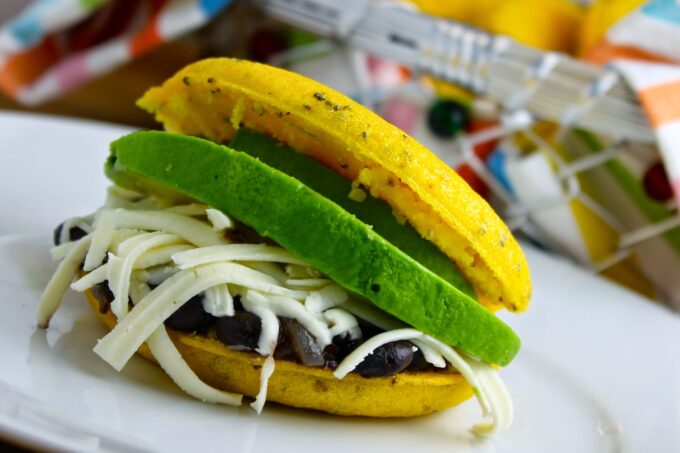
Can arepas be frozen?
Yes, arepas can be saved in the refrigerator for a few days in an airtight container, and they can also be frozen. You can save leftover arepas or make them in advance and refrigerate or freeze them.
How to reheat arepas
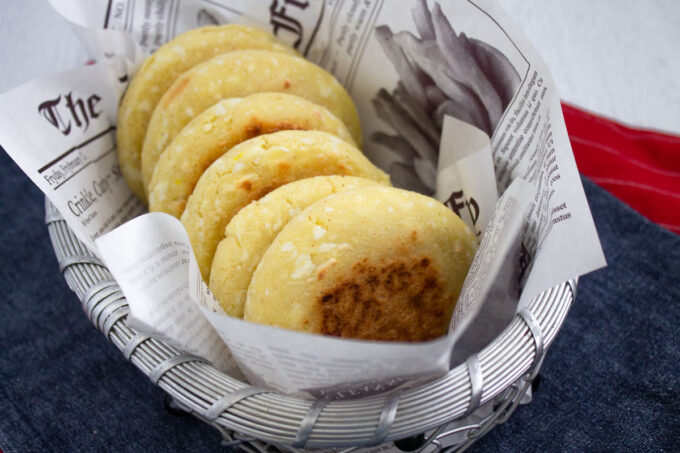
If the arepas are frozen, it is better to thaw them before heating them again. Before filling them, you can reheat them in the microwave, oven, toaster, cast-iron skillet, or a non-stick pan with a lid. My favorite method is in a pan with a lid.
How do you eat arepas?
Due to their neutral flavor, arepas are the perfect vehicle for all kinds of stuffings. Think of arepas as a pocket. That pocket can be stuffed with all kinds of delicious fillings (but peanut butter jelly or Nutella).
One of the most popular arepa fillings is a chicken, avocado and mayo salad. That is the glorious arepa “Reina Pepiada.”

Other popular fillings are asado negro, pernil de cochino (roasted pork leg), and carne mechada (shredded beef). Any Venezuelan animal protein goes perfectly with arepas.
My favorite fillings are tuna salad with mayo, fresh white cheese with butter, and Muenster cheese with tomato and crunchy bacon (and avocado if I have it handy). I also love arepas with perico (Venezuelan scrambled eggs).

My favorite fillings are tuna salad with mayo, fresh white cheese with butter, and Muenster cheese with tomato and crunchy bacon (and avocado if I have it handy). I also love arepas with perico (Venezuelan scrambled eggs).
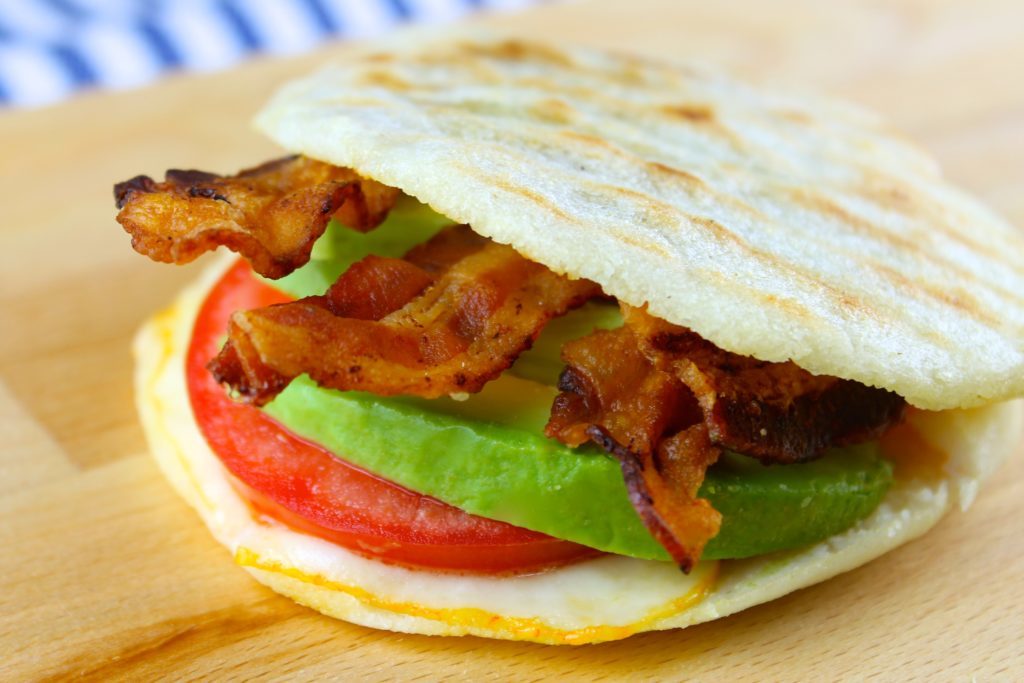
With or without an arepa maker?
Traditionally, authentic Venezuelan arepas are shaped by hand. Giving the arepas their perfect round, flat shape is a piece of cake. I don’t consider myself a good arepa shaper, though. So, my good friend Luisa Chesneau was in charge of the arepa making for the video in this post.
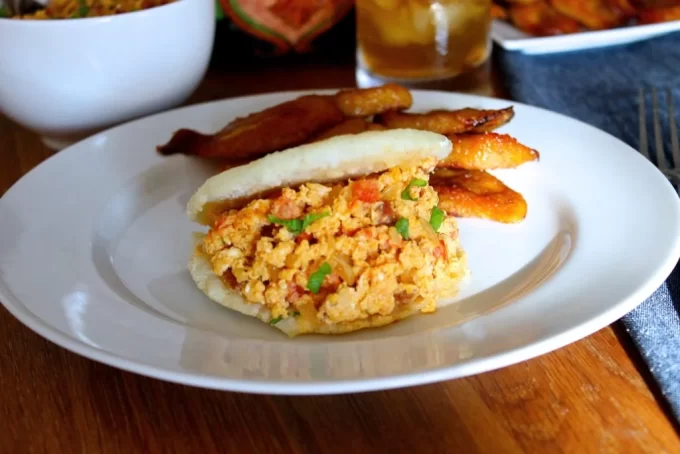
There are two known ways to solve the shaping “problem.” The first one is by practicing. The second one is with an arepa maker.
These days, arepa makers are becoming more and more popular. You make a little dough ball, and the arepa maker will do the rest of the job, including shaping perfect circumferences and perfectly cooking them. Cooking times vary according to every brand.
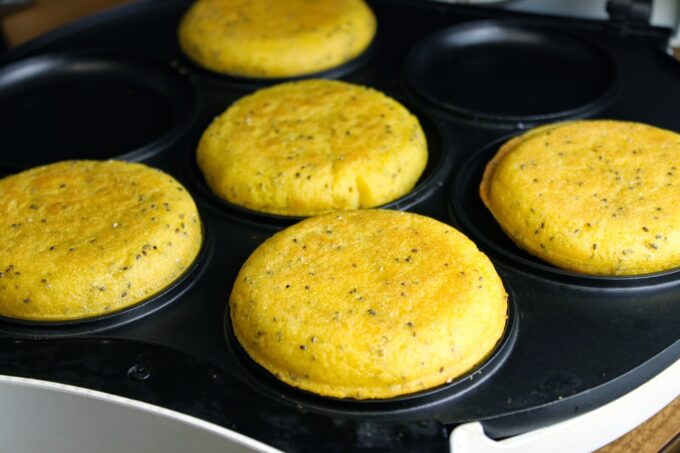
Some of the arepas in the pictures that illustrate this post were made in an arepa maker.
How to make arepas from scratch?
The recipe for the traditional Venezuelan arepas is printed on the Harina P.A.N. package. Following those directions will give you the perfect malleable and soft dough. This is precisely what I do. My only “secret” is that sometimes I don’t add any salt. But the salt thing is a personal choice.
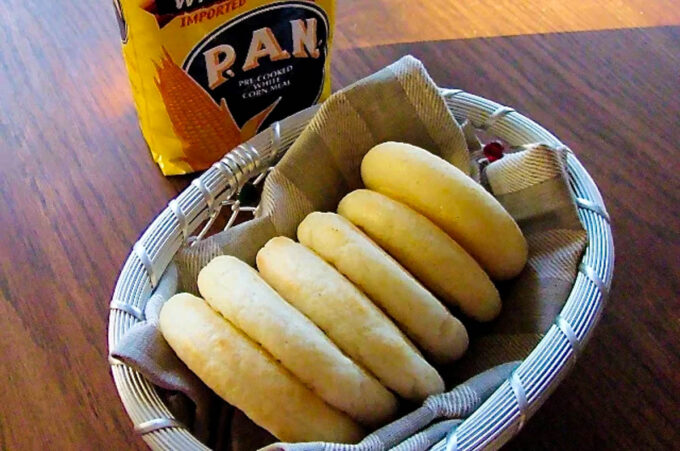
For those unfamiliar with making arepas, here is the not-so-secret formula to make the best plain ones:
- The water ratio to arepa flour is 1.25:1. This is 1 1/4 cup of water for every flour cup.
- Place lukewarm water in a large or medium bowl, then add the flour.
- Add the flour in two parts and stir with your fingers (you can also use a fork or wooden spoon) to avoid lumps.
- Knead the dough until it is soft and malleable. Let it sit for 5 minutes.
- Preheat an anti-adherent griddle to medium heat and grease it lightly with vegetable oil.
- Cook the arepas on the slightly oiled griddle for 5-6 minutes.
- When golden brown, flip the arepas and cook them for another 5 minutes.
- You will know the arepas are ready when you tap them with your hand, and they sound “hollow.”
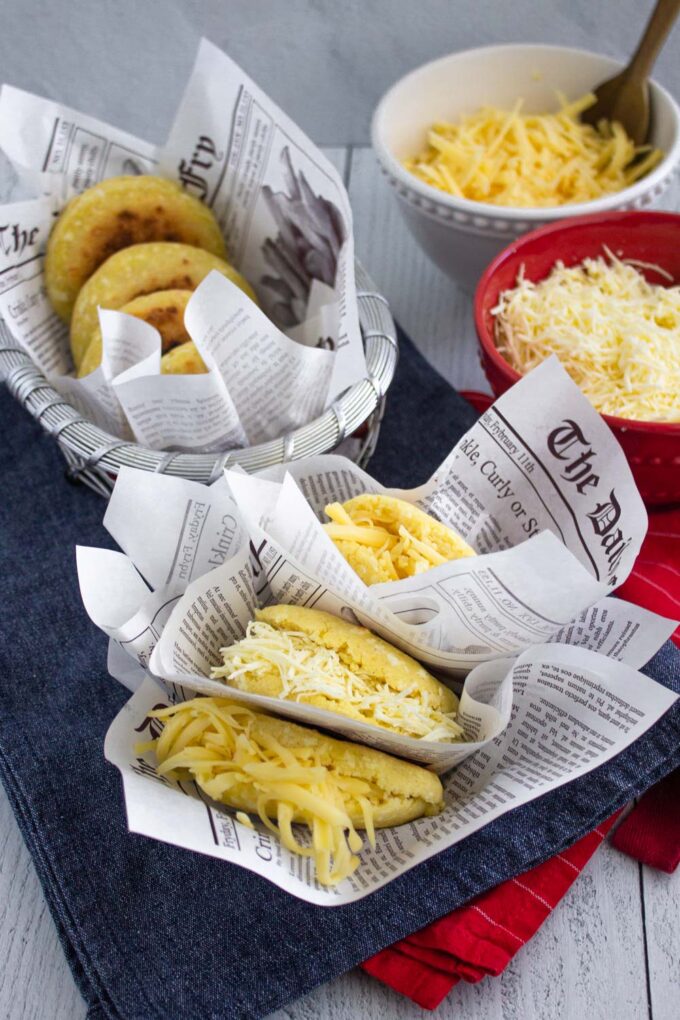
More arepa recipes
Hungry for more arepa recipes? Check these out:
- Arepas with Scrambled Eggs with Chorizo
- Arepas with Tuna Salad and Mayo
- Arepas Enriched with Eggs and Cheese
- Multicolored Arepas
Traditional Venezuelan arepas recipe
The following is the recipe used yesterday by Empresas Polar in my home country to celebrate the 50 anniversary of Harina P.A.N. They entered the Guinness Record Book with an arepa weighing 493.2 kilos! Isn’t it incredible?
Thanks for subscribing to my Youtube channel and visiting my Amazon store.
Authentic Venezuelan Arepas Recipe
Ingredients
- 1 1/4 cups lukewarm water
- 1 pinch salt optional
- 1 cup Harina P.A.N. pre-cooked white or yellow arepa flour
Instructions
- Place water in a large bowl.
- Add salt and stir to dissolve.
- Add half the arepa flour and stir.
- Add the rest of the arepa flour and stir until well combined.
- Knead the dough with your hands until it is soft, malleable, and has no lumps.
- Let the mixture rest for 5 minutes.
- Preheat a budare, griddle, cast iron pan, or non-stick skillet on the stovetop to medium-high heat.
- Divide the dough to make 6 balls.
- Take every ball, and make a flat round patty with your hands. Arepas must be the size of an English muffin.
- If you see cracks in the arepa edges, wet your fingertips and seal them (check the video to see how).
- Add a thin layer of oil to the budare or griddle. The idea is to have a slightly oiled griddle.
- Place arepas in the griddle or grill pan and cook them for 5-6 minutes.
- Reduce the fire to medium heat, flip the arepas, and cook them on the second side for another 5 minutes.
Video
Nutrition
Did you make this recipe?
Tag @enrilemoine on Instagram and hashtag it #byenrilemoine. Thank you!
- 2-Ingredient Venezuelan Guava Jam Recipe - June 26, 2025
- Venezuelan Mandocas Recipe – A Sweet & Savory Ripe Plantain Treat - June 19, 2025
- Sweet Plantains in Clove Syrup (Venezuelan Plátanos en Dulce) - June 14, 2025


